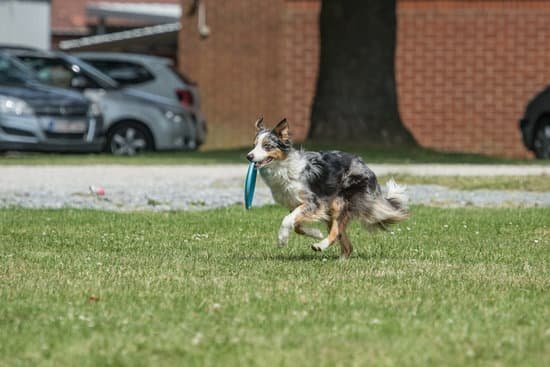Introduction
Alzheimer’s is a progressive, degenerative neurological disorder that affects a person’s cognitive abilities and everyday life. It is estimated that over five million people in the United States are living with Alzheimer’s and this number is expected to increase exponentially over the next several decades. As a result, many families are seeking help outside of traditional healthcare frameworks to care for their loved ones who have been diagnosed with the condition. One way in which families can offer assistance and support to their family member is by training an Alzheimer’s Service Dog.
These specially trained service dogs work to promote both physical and emotional well-being among those living with Alzheimer’s disease. They can recognize signs of distress or agitation, provide comfort when needed and follow certain commands, such as alerting caregivers in the case of wandering behavior. By providing companionship, alleviating anxiety and helping maintain cognitive stimulation for those living with Alzheimer’s, these service dogs have been proven to have positive impacts on quality of life. Research studies have shown that Alzheimer’s Service Dogs can reduce wandering behaviors by 62%, improve overall mood states by 57%, enhance social interactions among users by 77% and even reduce medication use amongst older adults dealing with dementia related issues.
Determining Suitability and Training Process
1. Qualifications: In order to be suitable for acquiring an Alzheimer’s Service Dog, applicants must have a diagnosis of a form of dementia and the cognitive abilities needed to understand and obey commands from a service dog. They must also have the physical mobility to handle a service animal (such as walking in outdoor areas or navigating stairs). Finally, they must have the psychological capacity and support from family/caregivers to care for an animal on a daily basis.
2. Training Process: In order for the training process for an Alzheimer’s Service Dog to be successful, it should include basic obedience training such as responding to commands like “sit” and “stay” as well as socialization with people of all ages and other dogs. Additionally, they should be trained with specific tasks targeted towards managing symptoms related to Alzheimer’s such as standing or restraint when feeling agitated or engaging in activities that may prevent wandering off. Since the majority of service dogs require two years or more until full maturity, consistent affection, positive reinforcement, rewards and ample repetition are required throughout this period in order to ensure success in helping with day-to-day tasks associated with caregiving.
Training the Dog on Essential Commands
Training the dog on essential commands such as sitting, staying, and coming when called is an important part of preparing a service dog for its role in providing assistance to individuals with Alzheimer’s Disease. Reward-based training is one method that can be employed using rewards such as treats or verbal praise as a way of reinforcing desired behaviors in the animal. Clicker training, another popular method, uses a small hand-held device that clicks when the animal follows commands correctly; this technique provides more instantaneous feedback than reward-based methods and can be used to signal that a particular behavior has been done correctly. Depending on the problem behaviors and preferred training style of the handler, either method can be effective in teaching dogs essential commands. An experienced trainer should be consulted to determine which approach would be most suitable for each particular dog.
Instruction for Specific Tasks and Activities
Training service dogs for individuals living with Alzheimer’s can be a rewarding and meaningful activity. The assistance that these specially-trained canine companions provide can help individuals live independently while helping to reduce their anxiety, improve their mood, and increase their overall quality of life.
Beyond physical assistance offered through tasks such as retrieving items or helping to steady their handler, Alzheimer’s service dogs can offer a variety of comforting activities such as providing emotional support during times of anxiety or agitation. They can also be trained to provide distraction by performing fun behaviors like barking when feelings of fear or confusion arise.
Alzheimer’s service dogs can even help alleviate boredom by engaging in activities like playing fetch or spontaneous napping in the same room as their handler. Through bonding and comfort, they provide an important source of companionship, an affection which the individual may not receive from other people due to lack of social interaction.
The training methods for these types of animals should be positive-reinforcement based and adaptable depending on the individual situation so that each response is tailored to address the particular needs for each dog/handler relationship.
Routines and Scheduling
Routines and scheduling are an important part of training an Alzheimer’s service dog. Establishing a routine helps the dog understand what is expected of them and makes it easier for them to follow commands. Having consistency and patience when it comes to establishing a routine will result in a better understanding between the owner and their pet.
Tips for creating a schedule for both you and your pet include:
• Setting specific times for meals, potty breaks, playtime, etc. so that your pup knows the expectations and when they can expect certain activities to occur.
• Making sure there’s enough time built into each day for exercise and mental stimulation – this will help keep your pup alert, focused, and comfortable with their surroundings.
• Trying not to overload your pup with information all at once – allow them time to process it before adding in new information or skills.
• Paying attention to cues from your pup such as body language or facial expressions – this is helpful in gauging how the pup is feeling each day which can be useful when adjusting their daily schedule if needed.
Gentle Grooming, Health, and Care
Training a service dog to help people with Alzheimer’s requires specific behaviors and skills that the dog must first learn. It is important that aside from teaching these specific skills, the caregiver will also maintain a routine for gentle grooming, health maintenance, and proper care of the service dog.
Regarding exercise, it is important to take the dog on regular walks and give them plenty of playtime outdoors in order to keep their muscles healthy and strong. Exercise also keeps the service dog mentally stimulated; activities such as fetch or swimming can also provide mental stimulation and promote learning. Socialization also plays an important role in training Alzheimer’s service dogs; introducing puppies to other dogs and humans early on in their development is essential to ensure they grow up to be comfortable around others. Other socializing behaviors such as obedience classes, participating in agility courses, or simply going on frequent walks through busy areas will help the puppy know how to interact with various elements of its surroundings. Proper dieting should be implemented in order to ensure that the service dog is receiving all necessary vitamins and minerals they need. Attention should also be given so that any sudden changes are noticed right away such as changes in behavior or sudden weight loss/gain as this could indicate a medical concern needing attention. Finally, regular grooming should be done by either a professional groomer or at home. This includes brushing their coats regularly, trimming nails regularly, brushing their teeth and cleaning ears properly so that no allergies occur from mites hiding in the ears.
By providing proper care for an Alzheimer’s service dog through general maintenance routines mentioned above, these furry companions can become great service animals that greatly increase quality of life for those living with Alzheimer’s disease.
Final Thoughts
1. Alzheimer’s Association: https://www.alz.org/ – Provides general information about Alzheimer’s and dementia, as well as local support services and care types that are available for individuals with these conditions.
2. American Kennel Club (AKC): https://www.akc.org/ – Offers resources about different dog breeds, general information about pet ownership, advice for training a service animal, and finding certified trainers in your area.
3. Dogington Post: https://www.dogingtonpost.com/ – A comprehensive website with articles written by professionals in fields related to canine health and article topics such as how to train an Alzheimer’s Service Dog and providing support for loved ones with dementia or Alzheimer’s disease through the use of pets.
4. International Association of Assistance Dog Partners (IAADP): http://iaadp.org/ – Provides member information regarding dogs used as assistive animals across all disability groups including those used to provide help to persons with Alzheimer’s disease or other forms of dementia presented on their website along with applicable laws relating pet ownership and therapy animals in the United States and Canada.
5. Pet Partners: https://petpartners.org/ – Offers resources on canine health, proper care documents for official service registration, behavior training documents for prospective service and therapy animal owners, reading material specifically focused on addressing the unique needs of elderly individuals living at home with a service animal companion, and research summaries from studies conducted investigating the therapeutic effects of utilizing assistance dogs in assisting individuals suffering from Alzheimer’s disease or other forms of dementia

Welcome to the blog! I am a professional dog trainer and have been working with dogs for many years. In this blog, I will be discussing various topics related to dog training, including tips, tricks, and advice. I hope you find this information helpful and informative. Thanks for reading!





